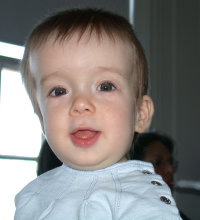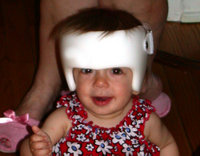About 15%-29% of pregnant women smoke in pregnancy, which can cause significant fetal and infant toxicity and lead to other adverse outcomes that may persist long after birth.
Many physicians aren't aware of all the problems associated with smoking before or during gestation, including reduced fecundity, ectopic (tubal) pregnancy, spontaneous abortion, abnormal placentation, growth retardation, premature rupture of the membranes (PROM), preterm delivery, and increased perinatal mortality
The association of smoking with spontaneous abortion has been controversial. The overall risk appears to be only slightly increased, but may be increased twofold in heavy smokers.
The risk of placenta previa and placental abruption is increased by about 50%, rising with the number of cigarettes smoked.
Symmetrical fetal growth retardation is a well-known adverse effect of maternal smoking during pregnancy, with an average reduction in birth weight of 200 g. The risk of having a low-birth-weight (<2,500 g) infant is doubled among smokers, and birth length and head circumference are reduced.
Stopping smoking before 32 weeks' gestation may prevent the adverse effects on birth weight and head circumference but has not been shown to prevent decreased height or increased ponderal index (i.e., a shorter and/or fatter infant).
For women who smoke at least 20 cigarettes/day, there is a twofold increased risk of PROM before 33 weeks. About 5% of all premature births can be attributed to maternal smoking.
If all smoking during pregnancy were eliminated, perinatal mortality, would be reduced by an estimated 10%. The increased risk of perinatal mortality is at tributable to low birth weight, prematurity, and abnormal placentation.
Accumulating evidence indicating that smoking during pregnancy in creases the risk of sudden infant death syndrome (SIDS) includes two recent studies which found a 3.5-fold greater risk of SIDS among babies of smokers.
Whether smoking induces congenital malformations is controversial, because studies over the past 20 years have shown both positive and negative associations between smoking and birth defects. While such an association may not exist, some recent evidence suggests that the conflicting results may be due to underreporting of smoking in pregnancy, unrecognized confounding variables, or interactions with genetic or environmental factors.
In general, studies have indicated that the risk of cleft lip and palate associated with smoking--if it exists at all--is low, with an odds ratio <2. The lack of consistency among studies concerning these defects suggests there may be an interaction between smoking and genetic factors. Recent data have suggested that maternal smoking increases the risk of foot deformities by a factor of 1.3-2.4. Risk increases more than 20-fold when combined with family history. These results are thought to be consistent with an interaction between a genetic factor and smoking.
Associations between maternal smoking and isolated craniosynostosis have been reported.
Transverse limb reduction defects were associated with maternal smoking in other studies, with the strongest association--an odds ratio of 2--when both parents smoked. Moderately significant associations between maternal smoking and urinary tract abnormalities in infants have recently been reported. There was no dose-response effect, possibly because of an increase in spontaneous abortions and stillbirths that may have lowered the number of live-born infants with these defects.
Conotruncal heart defects--such as tetralogy of Fallot, ventricular septal defects, and transposition of the great arteries--have been associated with maternal smoking, with rates about twice those of nonsmokers. These associations are biologically plausible, because these defects are thought to be related to vascular disruption.
Maternal smoking appears to be related to neurodevelopmental abnormalities, such as idiopathic mental retardation in children with no evidence of CNS damage or other developmental disabilities. Maternal smoking has also been related to behavioral problems and auditory deficits in the offspring.
In utero exposure to smoking has been associated with impaired neonatal lung function. And retinal vessel abnormalities, arterial narrowing/straightening, and venous dilatation/tortuosity were markedly increased in the eyes of neonates of smoking mothers, compared with those of nonsmoking mothers, but resolved by 6 months.
GERALD G. BRIGGS, B. PHARM., is pharmacist clinical specialist, Women's Hospital, Long Beach Memorial Medical Center; clinical professor of pharmacy, University of California, San Francisco; and adjunct professor of pharmacy, University of Southern California, Los Angeles. He is also coauthor of the reference book "Drugs in Pregnancy and Lactation."
COPYRIGHT 2003 International Medical News Group
COPYRIGHT 2003 Gale Group




